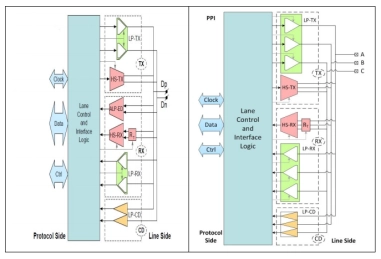MIPI PHY IP
MIPI PHY IP IP solutions provide the physical layer communication for various MIPI interfaces, ensuring robust signal integrity and low-power operation. Key offerings include MIPI D-PHY IP, ideal for high-speed video and imaging applications, MIPI C-PHY IP, designed for optimized performance in mobile devices, and MIPI A-PHY IP, which supports automotive applications with long-range, high-speed capabilities. Additionally, the MIPI C-PHY/D-PHY Combo IP offers versatility for devices requiring both high-speed data and video transmission. With the MIPI M-PHY IP, advanced mobile and data storage solutions can achieve peak performance, making MIPI PHY IP a cornerstone for next-generation connectivity.
All offers in
MIPI PHY IP
Filter
Compare
427
MIPI PHY IP
from
32
vendors
(1
-
10)
-
MIPI C/D-PHY Combo IP
- Compliant to MIPI D-PHY v3.0, C-PHY v2.1 specification
- Area efficient macro optimized for placement for dense SoC designs
- Support Uni-(TX or RX) and Bi-directional(TX and RX) mode
- Support emphasis architecture over lossy channel for TX
- Support equalize architecture over lossy channel for RX
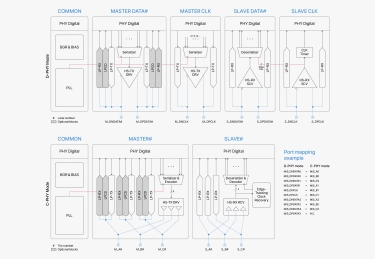
-
Simulation VIP for MIPI M-PHY
- Specification Compliance
- Complies with MIPI M-PHY 4.0, 4.1 and 5.0 specification
- M-PHY Type 1 and Type 2
- Supports Type 1 and Type 2
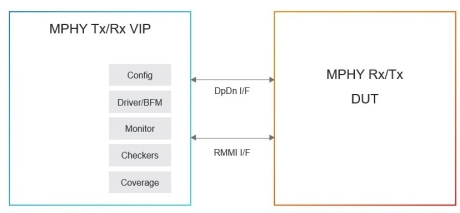
-
MIPI CSI2 Interface Solution
- Brite provides full solution for the MIPI CSI interface, which receives the data from sensors in PHY layer, and then converts the byte data to pixel after lane data mergence.
- Data scramble is an optional feature to decrease the EMI effect.
- A standard PPI interface is implemented for the connection between MIPI PHY and CSI controller. Brite MIPI CSI interface solution supports image applications with varying pixel formats.
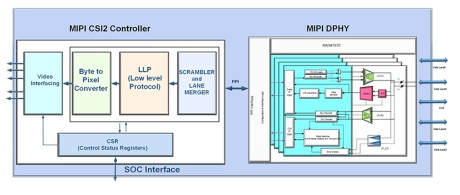
-
MIPI D-PHY TX PHY and DSI controller
- Scalability and Flexibility: Supports multiple data lanes for higher aggregate bandwidth, any of the multiple lanes can be configured into Clock Lane
- High Data Rates: Supports data transmission rates up to 4.5Gbps per lane, allowing for high-resolution displays and smooth refresh rates
- Energy Efficiency: Optimized for low power consumption, making it ideal for battery-powered devices
- Complete Solution: Combines the MIPI D-PHY Transmitter PHY and DSI Controller to make it a one-stop solution
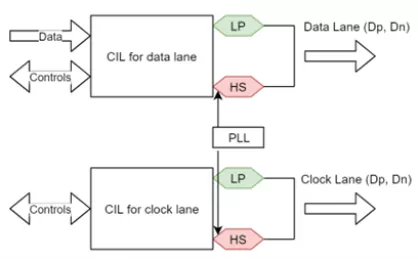
-
MIPI M-PHY® 4.1 Analog Transceiver
- The M-PHY is of Type 1, which apply to UFS, LLI, and CSI-3 protocols. The Multi-gear M-PHY 4.1 consists of analog transceivers, high-speed PLL, data recovery units as well as state-machine control — all in a single GDSII.
- The interface to the link protocol-specific controller (host or device) is compliant with the M-PHY RMMI specification, which allows seamless integration of the two IPs, namely the controller and the PHY, into the chip design.
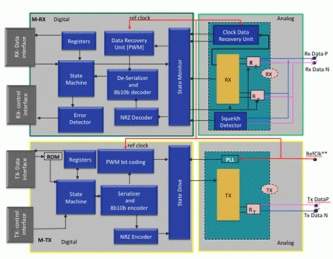
-
MIPI D-PHY℠ v2.5 IP Core
- This Tx/Rx transceiver complies with the MIPI Alliance C-PHY℠ v2.0 and D-PHY℠ v2.5 specifications, with world-class area and power dissipation, and is available for a range of foundry processes.
- This IP delivers 6 Gbps per lane for a max throughput of 24 Gbps in D-PHY℠ mode, and 6 Gsps per trio for a max throughput of 41.04 Gbps in C-PHY℠ mode.
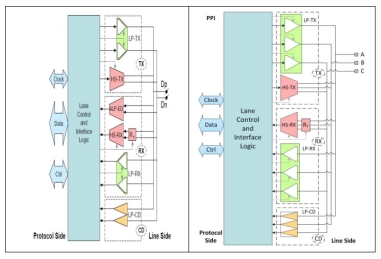
-
MIPI D-PHY v2.1 IP Core
- Compliant to MIPI® Alliance Standard for D-PHY specification Version 2.1
- Supports D-PHY 1.1 synchronous transfer mode at high speed mode with a bit rate of 80-1500 Mb/s without deskew calibration
- Supports DPHY 1.2 for 1500 – 2500 Mb/s with deskew calibration.
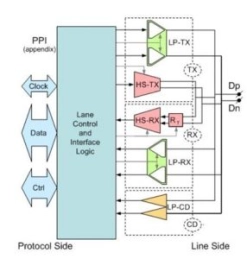
-
MIPI D-PHY Analog Transceiver IP Core
- The MIPI D-PHY Analog Transceiver IP Core is fully compliant with the D-PHY specification version 1.1.
- It supports the MIPI® Camera Serial Interface (CSI-2) and Display Serial Interface (DSI) protocols at speeds up to 1.5Gbps per lane.
- It is a Universal PHY that can be configured as a transmitter, receiver, or transceiver.
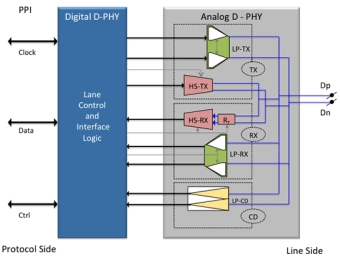
-
MIPI CPHY v1.1 Analog Interface
- The MIPI CPHY V1.1 improves throughput over a bandwidth-limited channel, allowing more data without an increased signaling clock.
- It is intended to be used for camera interface (CSI-2 v1.3) and display interface (DSI-2 v1.0).
- The signaling interface uses a 3-phase transceiver that encodes 3-bit symbols over 3 wires. This is different from the two-wire differential “lane” used in D-PHY.

-
MIPI C-PHY℠ v2.0 + D-PHY℠ v2.5 Combo IP Core
- This Tx/Rx transceiver complies with the MIPI Alliance C-PHY℠ v2.0 and D-PHY℠ v2.5 specifications, with world-class area and power dissipation, and is available for a range of foundry processes.
- This IP delivers 6 Gbps per lane for a max throughput of 24 Gbps in D-PHY℠ mode, and 6 Gsps per trio for a max throughput of 41.04 Gbps in C-PHY℠ mode.
